Why Taekwondo Class is Beneficial
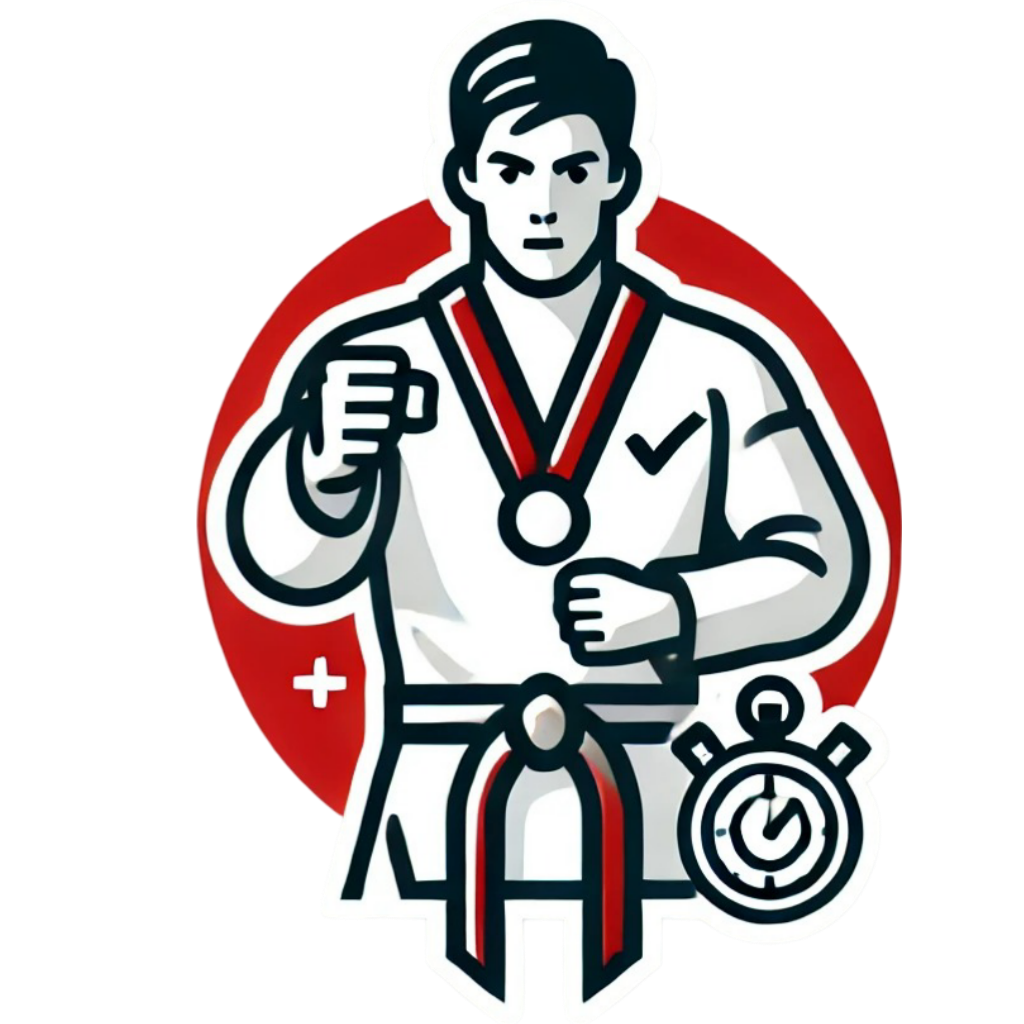
Discipline

Discipline
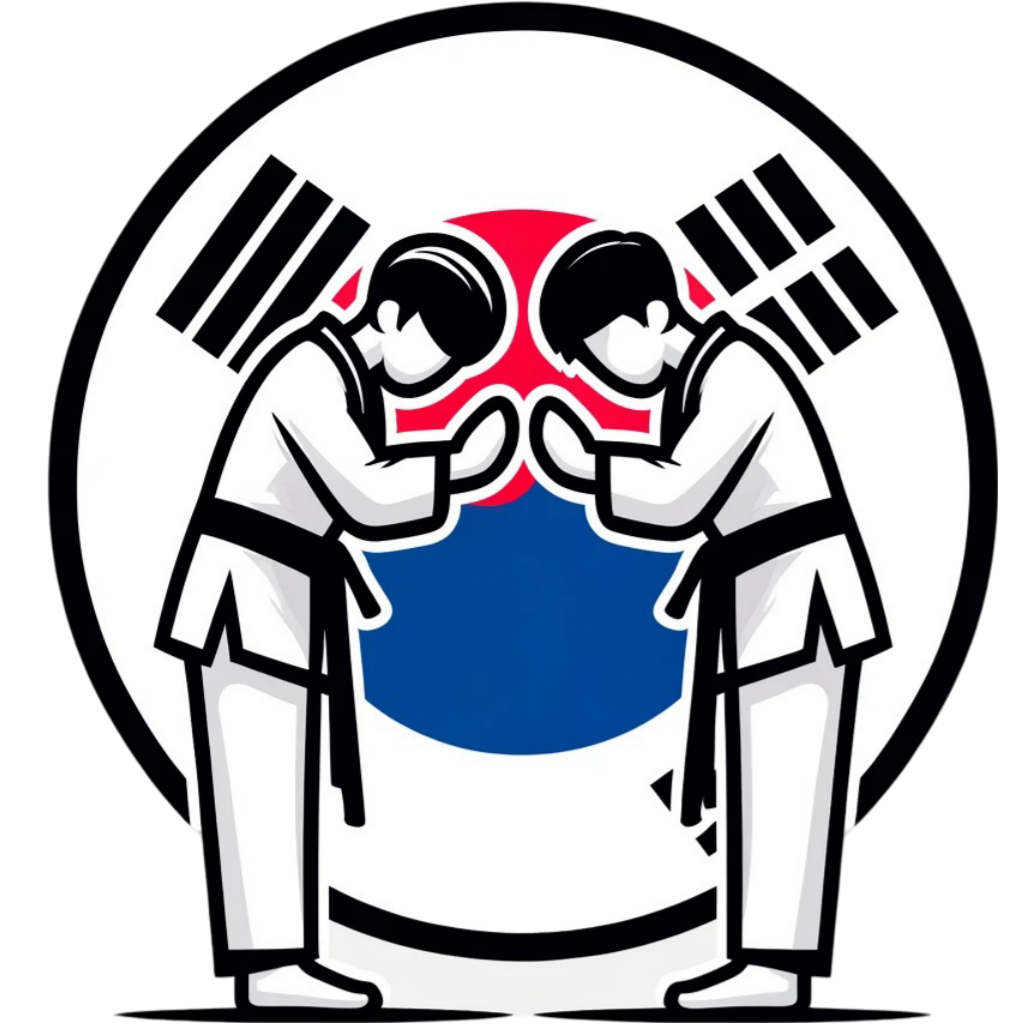
Confidence

Respect

Fit
Taekwondo Fundamentals

- Makgi Blocks – Varieties of blocks including low block, middle block, and high block needed to cover attacks, something that is very important in martial arts in schools.
- Chagi Kick – Strong, direct kicks with the front leg, including the front kick, roundhouse kick, or side kick; taekwondo training typically involves these techniques, as they are all necessary for proper taekwondo training.
- Jireugi Punch – A straight punch or reverse punch used in a striking or defensive technique; a basic skill in taekwondo activity.
- Joon Bi 자세 – Pyeonji chigi (both hands ready) basic stance body position: Stand with feet in basic stance, standing wide apart; both hands are prepared to fight; scattering is key to mind and body coordination.

Fundamentals of Taekwondo
- Makgi Blocks – Varieties of blocks including low block, middle block, and high block needed to cover attacks, something that is very important in martial arts in schools.
- Chagi Kick – Strong, direct kicks with the front leg, including the front kick, roundhouse kick, or side kick; taekwondo training typically involves these techniques, as they are all necessary for proper taekwondo training.
- Jireugi Punch – A straight punch or reverse punch used in a striking or defensive technique; a basic skill in taekwondo activity.
- Joon Bi 자세 – Pyeonji chigi (both hands ready) basic stance body position: Stand with feet in basic stance, standing wide apart; both hands are prepared to fight; scattering is key to mind and body coordination.
Highlights of our Taekwondo

Class 1-2
- Stronger Kicks – Students learn to perfect improved kicks, leading to more agility and accuracy, essential for the taekwondo class for students.
- Self-Defense Fundamentals – Students learn how to self-defense themselves and feel comfortable when faced with real scenarios.
- Teamwork and Respect – Group exercises such as team drills teach teamwork and respect which are essential in martial arts teaching.
- Physical fitness — Dynamic training builds muscles, strength, flexibility and endurance, improving all aspects of physical fitness.

Nursery, K1, K2
- Balancing Stance – The student needs to learn the initial basic stance used for taking care of posture and balance of the body, also helps to improve physical fitness and maintaining awareness.
- Kick – Easy kick techniques foster coordination, strengthen muscles, and boost fine motor skills in a playful manner taekwondo in schools.
- Listen and Focus – With structured practice, kids learn patience, attentiveness, and discipline, key ingredients for martial arts in schools.
- Self-Confidence – The positive reinforcement from learning enables us to have self-confidence; you are appreciating every little thing you improvise in taekwondo training.

Grade 3-5
- Forms or Poomsae Patterns – Learning the different taekwondo training patterns, emphasizing technique, discipline, and precision.
- Sparring Techniques – Controlled sparring develops quick reflexes, strategies, and sportsmanship with padded floors to ensure the safety of the students
- Leadership Development – Senior students mentor juniors which deploys responsibility and leadership attributes through taekwondo activity.
- Goal Setting – Students prepare for belt advancement and persevere to achieve their goals, reinforcing mind and body discipline.

Class 1-2
- Stronger Kicks – Students learn to perfect improved kicks, leading to more agility and accuracy, essential for the taekwondo class for students.
- Self-Defense Fundamentals – Students learn how to self-defense themselves and feel comfortable when faced with real scenarios.
- Teamwork and Respect – Group exercises such as team drills teach teamwork and respect which are essential in martial arts teaching.
- Physical fitness — Dynamic training builds muscles, strength, flexibility and endurance, improving all aspects of physical fitness.

Nursery, K1, K2
- Balancing Stance – The student needs to learn the initial basic stance used for taking care of posture and balance of the body, also helps to improve physical fitness and maintaining awareness.
- Kick – Easy kick techniques foster coordination, strengthen muscles, and boost fine motor skills in a playful manner taekwondo in schools.
- Listen and Focus – With structured practice, kids learn patience, attentiveness, and discipline, key ingredients for martial arts in schools.
- Self-Confidence – The positive reinforcement from learning enables us to have self-confidence; you are appreciating every little thing you improvise in taekwondo training.

Grade 3-5
- Forms or Poomsae Patterns – Learning the different taekwondo training patterns, emphasizing technique, discipline, and precision.
- Sparring Techniques – Controlled sparring develops quick reflexes, strategies, and sportsmanship with padded floors to ensure the safety of the students
- Leadership Development – Senior students mentor juniors which deploys responsibility and leadership attributes through taekwondo activity.
- Goal Setting – Students prepare for belt advancement and persevere to achieve their goals, reinforcing mind and body discipline.
Our Taekwondo Lab Setup

Our Taekwondo Arena is a powerhouse of discipline, strength, and self-discovery, where students unlock their physical and mental potential through martial arts in schools.
- •Taekwondo Programs for Exceptional Students
- •Best schools with taekwondo class in India
- •Great Taekwondo Workshops for Students
- •Empowering Students through Discipline and Strength
- •Fostering Focus, Fitness, and Respect Through Martial Arts
Explore the Taekwondo Activity
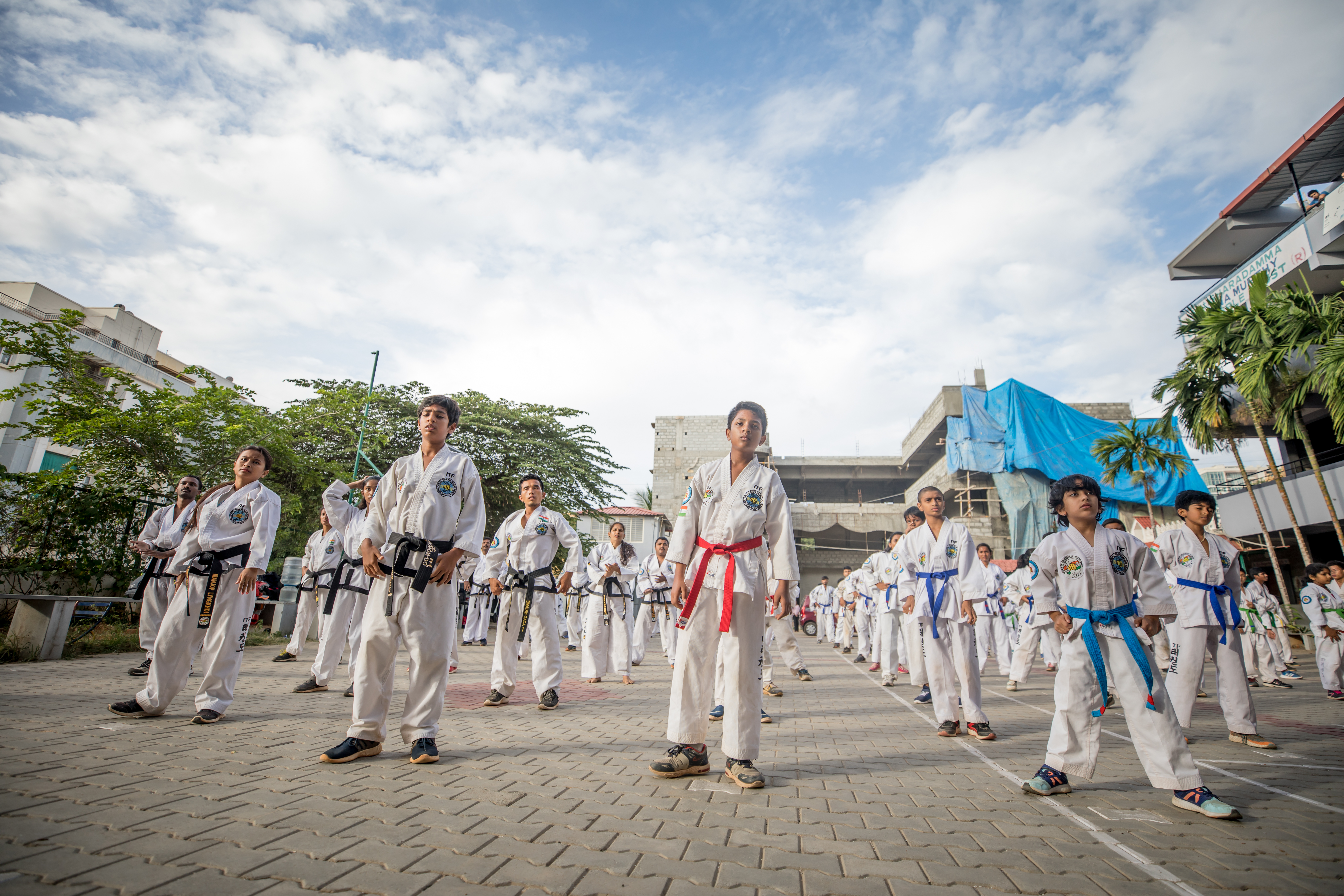
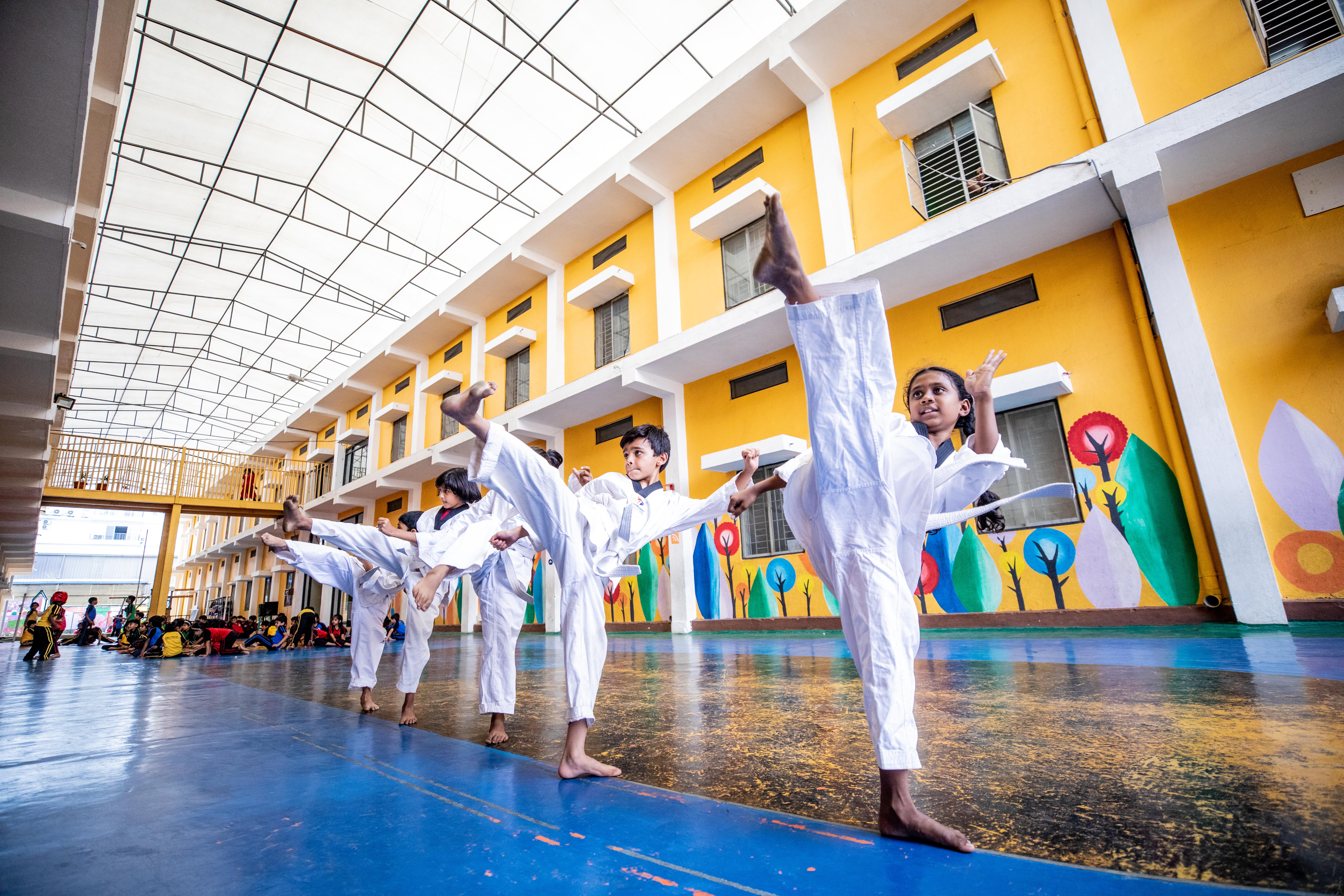
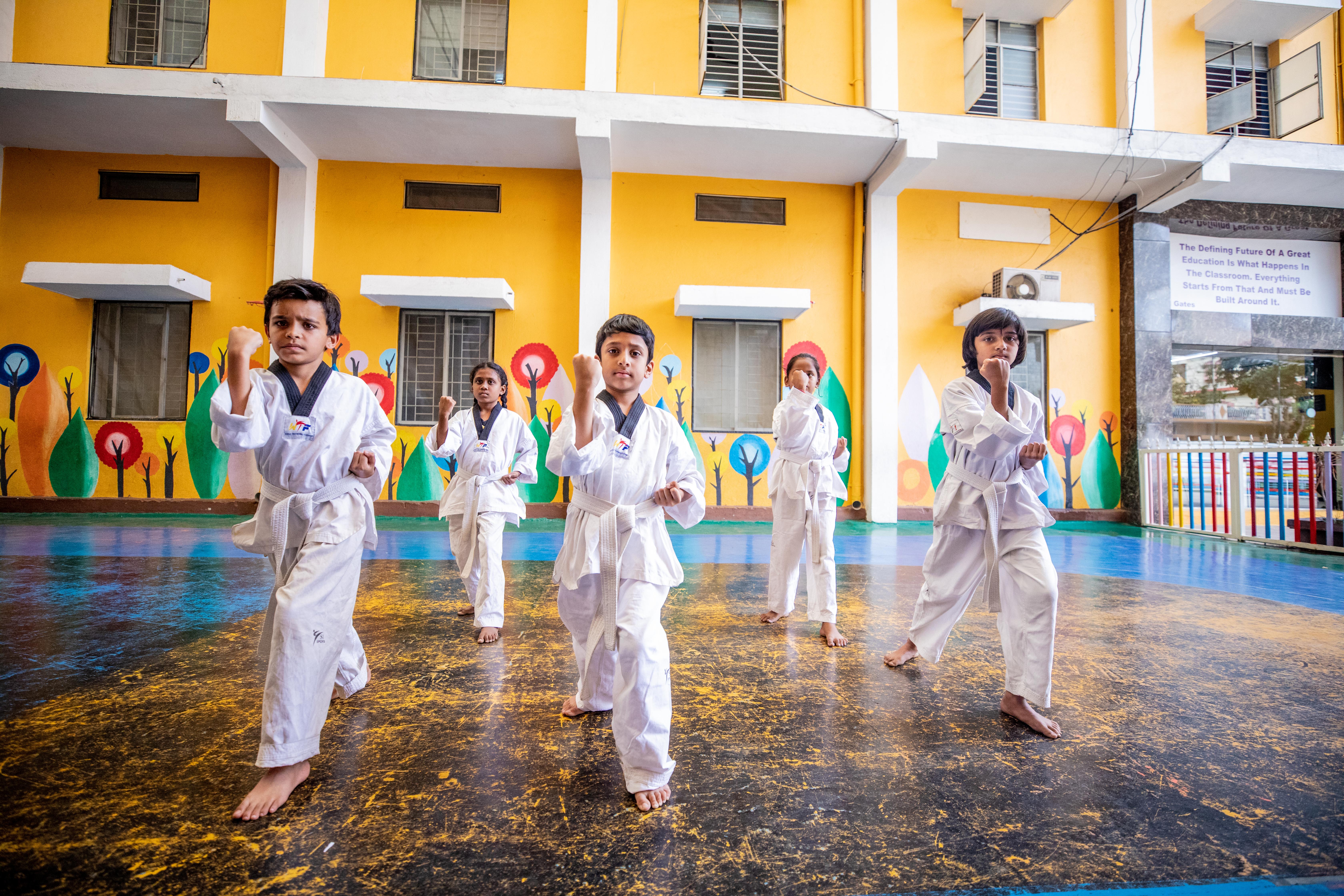



Frequently Asked Questions
The minimum age to start Taekwondo training varies depending on the school and instructor. Generally, children as young as 3 to 5 years old can begin basic Taekwondo classes focusing on coordination, discipline, and fun exercises. Formal training, including structured techniques and sparring, typically starts around 6 to 7 years old. However, there is no upper age limit—Taekwondo is suitable for all ages! It helps develop self-discipline, focus, flexibility, and confidence. Before enrolling, it’s best to check with a local Taekwondo school for their specific age requirements and training programs.
No, you don’t need to be super fit before starting Taekwondo training. Taekwondo itself helps improve your fitness, flexibility, strength, and endurance over time. Beginners of all fitness levels can start, as training is designed to gradually build stamina and skills. Basic warm-ups and stretching exercises will prepare your body for more intense movements. Consistency and dedication matter more than initial fitness levels. Instructors often modify techniques to suit different abilities. So, don’t worry—just start, and your fitness will naturally improve along the way!
The time required to achieve a black belt varies depending on the martial art, the school, and the practitioner's dedication. On average, it takes 3 to 5 years in many disciplines like Karate or Taekwondo, but some traditional styles may require 7 to 10 years. Progress depends on consistent training, skill mastery, and passing rigorous belt tests. Some schools have strict time requirements and minimum class attendance. Others may accelerate the process for highly dedicated students. Achieving a black belt is not just about time but also discipline, perseverance, and understanding of the art. Ultimately, it’s a personal journey that varies for everyone.
Taekwondo is a Korean martial art known for its high, fast kicks and dynamic footwork. It emphasizes agility, speed, and precision, making it distinct from other martial arts. Unlike Karate, which focuses on hand techniques, Taekwondo prioritizes powerful leg strikes. Compared to Judo or Brazilian Jiu-Jitsu, which involve grappling and ground fighting, Taekwondo is primarily a stand-up striking art. It also incorporates elements of discipline, respect, and self-control. The sport is recognized globally, even featuring in the Olympics. Its training includes patterns (poomsae), sparring, and breaking techniques. Overall, Taekwondo blends self-defense, sport, and personal development.
Learning Taekwondo offers numerous benefits, both physically and mentally. It improves strength, flexibility, and endurance, enhancing overall fitness. The discipline instills self-confidence, focus, and self-control, essential for daily life. Taekwondo teaches self-defense skills, providing a sense of security. It promotes respect, discipline, and perseverance, shaping strong character. Training regularly helps reduce stress and boost mental well-being. It also fosters social connections and teamwork, making it great for all ages. Lastly, Taekwondo encourages a goal-oriented mindset, motivating individuals to achieve success in other aspects of life.
To train in Taekwondo, you'll need essential equipment for safety and performance. A dobok (Taekwondo uniform) with a belt represents your rank. Protective gear like headgear, mouthguard, chest protector, shin guards, and forearm guards ensure safety during sparring. Taekwondo shoes can be optional but help with training on rough surfaces. A kicking pad or target mitts aids in practicing strikes and accuracy. Hand wraps and gloves protect your hands during sparring. If training at home, consider a freestanding punching bag for solo practice. A jump rope can help improve footwork and agility.


Comments (0)
Save my name, email and website in this browser for next time I comment